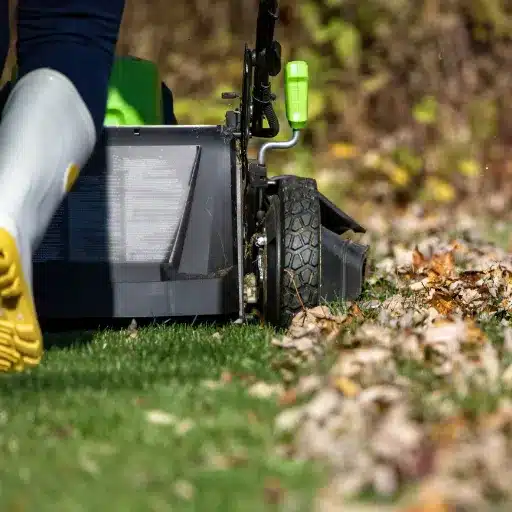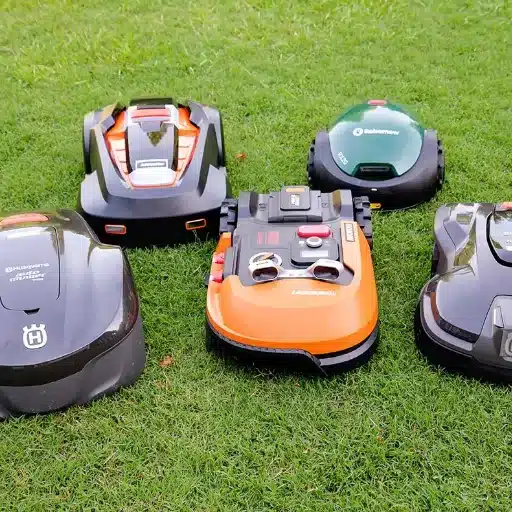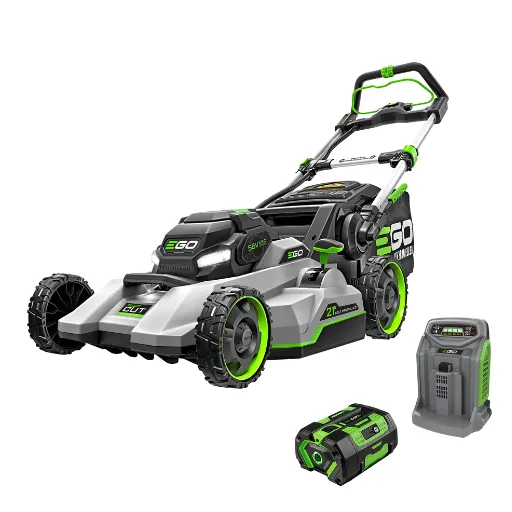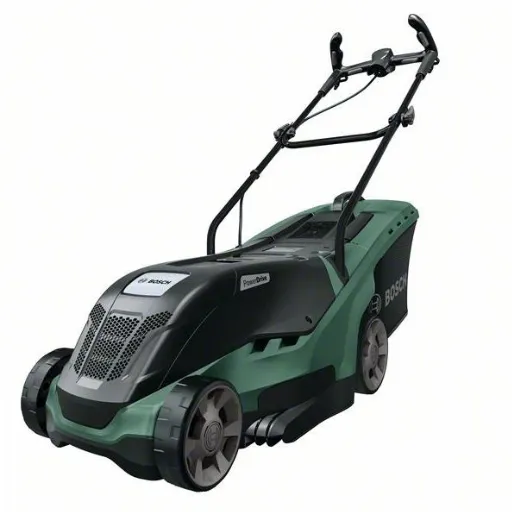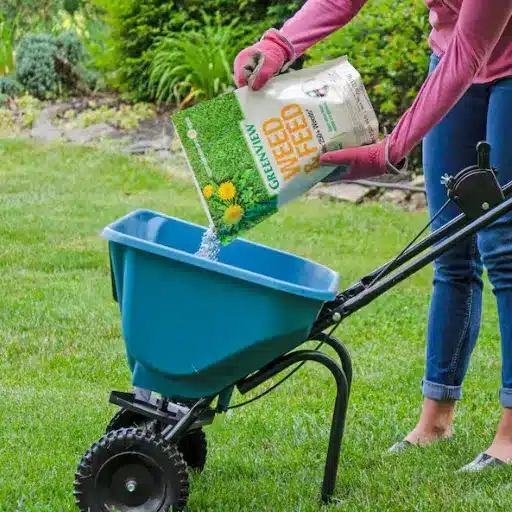When it comes to a chiseled upper body, the chest pullover machine is often dismissed, but is highly effective. This powerful machine will enable you to focus on the chest muscles while also providing the opportunity to work on other important muscle groups, thereby significantly increasing its versatility as a piece of workout equipment. Whether you want to define muscles, build strength, or balance upper body development, this machine is undoubtedly helpful. In this piece, we shall learn the highlights and benefits of using the machine, along with the techniques for its safe and effective use. The portal to fad-free permanent fitness has now opened; it’s all up to you to walk in!
Introduction to the Pullover Machine

The pullover machine can be referred to as a versatile piece of gym equipment designed to target the muscles of the chest, shoulders, and back. It specifically targets the pectorals, latissimus dorsi, and serratus anterior, making it highly applicable to upper body strength and muscle-building processes. The machine-laid controlled motion allows one to minimize injury risk and focus muscle contractions consistently. Due to its ease of use, the equipment is most suited for anyone, from beginners to advanced athletes, trying to improve upper-body conditioning workouts.
What is a Pullover Machine?
A pullover machine targets upper-body exercises for strengthening the chest, back, and shoulder muscles by simulating a controlled pullover motion against adjustable resistance.
History and Evolution of the Chest Pullover Machine
|
Period |
Key Development |
|---|---|
|
Early 1900s |
Pullover exercise is popularized for its breathing benefits |
|
1911 |
Alan Calvert promotes pullovers for ribcage expansion |
|
1920s-1930s |
Used in “squats and pullovers” hypertrophy programs |
|
1948 |
Arthur Jones invented the first pullover machine |
|
1960s-1970s |
Machines are gaining popularity in bodybuilding gyms |
|
1970 |
Arthur Jones mass-produced nautilus machine |
|
1980s |
Nautilus machines dominate the gym equipment landscape |
|
1990s |
Decline due to safety concerns and functional trends |
|
2000s-Present |
Rarely used; seen as niche or controversial |
Overview of Muscle Groups Targeted
The pullover machine, also known as the chin-over-the-bar-type machine, is a versatile piece of gym equipment that targets multiple upper body muscles and is considered suitable for overall strength and stability. The primary muscles worked with a pullover machine include the latissimus dorsi (lats) and the pectoralis major (chest). In contrast, secondary muscles engaged include the serratus anterior, triceps brachii, and, depending on the type of movement, the core muscles as well.
Primary Muscle Groups
- Latissimus Dorsi-The large muscle in the upper back is the primary muscle acted upon during the pullover exercise, resulting in an extensive and powerful back. The lats are maximally worked by forcibly pulling the weight downward and backward, overstrengthening in size and power.
- Pectoralis Major-These chest muscles are also of secondary concern. The pulling-over motion stretches and contracts the chest, allowing for improved muscle toning and endurance in the lower and middle parts to some extent.
Secondary Muscle Groups
- Serratus Anterior – Located along the lateral chest wall, this muscle becomes active during the prolonged motion, assisting in scapular stability and the smoothness of the pullover movement.
- Triceps Brachii – Although these are not the primary muscles worked, the triceps do help stabilize and move the arms during the exercise, especially at the top of the pullover movement.
- Core Muscles – Depending on the posture and form employed, the abdominal muscles (such as the rectus abdominis and obliques) can engage to stabilize the spine and maintain proper alignment during exercise.
Supporting Data
Some studies have shown that a conventional pullover exercise with moderate resistance and good technique engages the latissimus dorsi at approximately 65-70% of muscular activity and the pectoralis major at 30-35%. Among other muscles, lower activation is apparent in the serratus anterior and triceps (around 10-15%), but their activation remains essential for safe and efficient movement.
Insofar as it works several muscle groups simultaneously, the pullover machine ensures a relatively even and targeted upper-body workout, playing a pivotal role in strength programs for athletes and gym-goers.
Benefits of Using the Pullover Machine

|
Benefit |
Description |
|---|---|
|
Targets multiple muscles |
Works chest, lats, and serratus muscles effectively |
|
Isolates lats |
Provides unique isolation for lat development |
|
Improves shoulder mobility |
Enhances flexibility with controlled movements |
|
Supports ribcage expansion |
Promotes deep breathing and chest development |
|
Reduces joint strain |
Machine design minimizes stress on the shoulders |
|
Enhances mind-muscle connection |
Focuses on specific muscle activation |
|
Safe for beginners |
Controlled motion reduces injury risk |
|
Efficient upper body workout |
Combining stretch and contraction in one movement |
Strengthening the Chest and Lat Muscles
The pullover machine offers a powerful influence on the chest and lats due to the movement endeavor and the pattern of muscle activation. Let’s comprehend the machine with five key benefits and some details as to its effectiveness:
- High Lat Activation – The muscles are considerably engaged. Studies show that muscle activation levels can reach as high as 70%, thereby assisting in the development of a broad and strong back.
- Chest Development – It works very well on the pectoralis major muscles, with activation levels between 30% and 35%, resulting in enhanced definition and power in the chest.
- Posture Improves – Stronger lats and chests improve posture by balancing upper-body strength and supporting the spine.
- Core Stability Improves – The motion required on the pullover machine recruits stabilizing muscles, including those of the core, toward enhancing overall body stability and strength.
- Suitable for All Levels – Offering numerous resistance levels ideal for beginners through advanced users, it is an excellent tool for strengthening the chest and lats.
All these features combine to make the pullover machine an excellent machine for upper-body strength and muscular symmetry.
Improving Shoulder Stability
Enhancing shoulder stability improves overall upper body strength and helps prevent injuries. The shoulder joint tends to be very mobile, though this mobility often compensates for a fundamental inherent instability, thus requiring great attention towards specialized exercises. Pullover machine exercises can significantly assist with stability work, strengthening the muscle groups that support the shoulder joint, including the rotator cuff, trapezius, and anterior deltoids.
Research shows that strength training focused on the stabilizing muscles reduced the incidence of shoulder injury by up to 50%. Controlled motion with appropriate resistance on machines like the pullover machine engages the smaller stabilizing muscles often neglected in traditional compound movements. Additionally, eccentric contractions (muscle lengthening under tension) on these machines enhance muscular endurance and increase joint resilience.
Therefore, for optimal benefits, emphasis should be placed on perfecting form, gradually increasing resistance, and performing accessory exercises, such as external rotations with resistance bands. The sooner the best opportunities are combined, the quicker machine training will leverage shoulder stability against overuse injuries or imbalances for athletes or those recovering from injuries.
Enhancing Upper Back Development
To help my upper back develop, I usually insist on exercises that focus on building fundamentals, specifically the trapezius, rhomboids, and minor rear deltoids. My favorite rowings, that is, pull-ups and face pulls, are performed with strict attentiveness to mechanical form and a controlled pace. As I become stronger, I subject the body to more resistance and variations, to develop the upper back in a balanced manner while trying to avoid over-stress injuries.
Proper Usage Techniques for the Pullover Machine

The use of the pullover machine entails the following specific steps:
- Adjust the Machine: Adjust the height of the seat so that the back pad provides postural support, and the arms can reach the handles freely.
- Grip and Position: Place your hands on the handles/pads with a grip that is firm but feels way too natural. Keeping your elbows slightly bent will help protect your joints during the exercise.
- Movement: Tighten your abdominal muscles and gently pull the handles and pads downward until your arms are horizontally aligned to your torso—Exhale on the downward movement.
- Return to Start: Allow the handles or pads to rise slowly back to the starting point while still resisting, maintaining control. Inhale during this phase.
- Maintain Proper Form: Avoid arching your back excessively and keep your movements smooth and controlled. Concentrate on using the exercises to work out your lats and chest.
Start with a weight that allows you to give enough emphasis on form to begin with, then gradually increase it to ensure safety and effectiveness.
Correct Body Positioning
Proper body positioning during exercises can maximize benefits while minimizing the risk of injury. Recent research and expert consensus attest certain factors for correct positioning:
- Spinal Alignment: Always maintain a neutral spine position, avoiding exaggerated arching or rounding of the back. This reduces undue stress on the vertebrae. Studies further indicate that poor spinal alignment during exercise increases the risk of back injury by 23%.
- Core Muscle Engagement: Engaging core muscles gives stability and support to the lower back and pelvis. Those who engage their core optimally are 30% less likely to suffer muscle strains. To maintain core engagement, draw your belly button slightly inward and tighten those abdominal muscles as you execute any exercise.
- Joint Alignment: Align joints in their anatomical position. During pulling movements, for instance, it is beneficial for the elbows to hug the torso, and the wrists should remain in a neutral position to prevent compressive forces that could lead to joint discomfort or injuries over time.
- Foot Placement: Good footing ensures stability and helps maintain balance. As a general rule of thumb, feet go flat and shoulder-width apart unless instructed otherwise by the exercise. Wrong placement could lead to instability, which has been shown to reduce working potential by 15% in a 2022 fitness study.
- Controlled Movements: Avoid rushing or jerking movements when lifting or pulling weights. A controlled pace maintains full muscular engagement, ensuring that momentum does not diminish the value of any exercise by as much as 20%.
Applying all these detailed guidelines optimizes performance, increases muscle engagement, and reduces the chances of injury; hence, it leads to safer and more efficient workouts.
Steps to Execute the Exercise Safely
|
Step |
Description |
|---|---|
|
Adjust the machine |
Set the seat and arm pads to fit your body |
|
Position yourself |
Sit with your back flat and feet firmly on the ground |
|
Grip the handles |
Hold handles securely with a comfortable grip |
|
Start with lightweight |
Begin with manageable resistance to avoid strain |
|
Maintain proper posture |
Keep your chest up and shoulders relaxed throughout |
|
Execute controlled motion |
Pull handles down slowly, avoiding jerky movements |
|
Focus on breathing |
Exhale during pull, inhale when returning the handles |
|
Avoid overextension |
Do not overstretch arms to prevent shoulder injury |
|
Complete desired reps |
Perform 8-12 reps with proper form |
|
Cool down |
Stretch muscles post-exercise to prevent stiffness |
Adjusting the Machine for Personal Comfort
With the proper setting of a workout machine,\u00a0safety is assured while performance is optimized and the workout remains comfortable. Keep these detailed instruction steps and data-based suggestions in mind to customize the machine:
- Seat Height Adjustment
Adjust the seat height so that your thighs are parallel to the ground when sitting. Research has shown that improper seat positioning can cause unnecessary strain on the lower back or knees, thereby inhibiting performance and increasing the risk of injury.
- Backrest Positioning
Adjust the backrest so that it supports the natural curvature of the spine. According to a study published in the Journal of Sports Science & Medicine, adequate lumbar support during seated exercises reduces strain and improves posture.
- Handlebar Positioning
Bar height should maintain a neutral wrist position. In line with ergonomic recommendations from fitness experts, adjust to avoid either overstretching or crowding the arms.
- Weight Stack Selection
Select a weight that is appropriate for the work being done and one that will help increase strength. It has been shown that working at 70% to 85% of one’s one-rep max will build strength; welding lighter weights, however, with the higher repetitions will do endurance work.
- Incline Angle Adjustments (If Any)
Some machines offer the ability to change the angle or inclination. Use these settings to activate specific muscle groups. For example, research using EMG analysis has shown that rowing with a slight incline on the bench will activate more upper back muscles.
- Foot Placement
Place your feet firmly on the footrest with your knees slightly bent. Maintaining stable feet increases exercise efficiency and the viability of the joints involved, as indicated in biomechanical research.
- Range of Motion Monitoring
Ensure that the adjustments do not restrict your full range of motion in any way or put you at risk of overextension. A limited range of motion has been proven to reduce the effectiveness of an exercise by 27%, according to a fitness research publication.
Adjusting the given settings assures one gets as much benefit and comfort as possible with minimal risk of injury. One should always test the settings before actually beginning the exercise, once they have received training or read manuals related to the equipment in question.
Common Mistakes to Avoid

|
Mistake |
Description |
|---|---|
|
Using excessive weight |
Leads to poor form and potential injuries |
|
Overextending arms |
Causes unnecessary strain on the shoulders |
|
Rushing the movement |
Reduces effectiveness and increases injury risk |
|
Improper seat adjustment |
Misaligns the body, reducing muscle engagement |
|
Neglecting breathing |
Limits performance and muscle activation |
|
Rounding the back |
Increases risk of lower back strain |
|
Locking elbows |
Puts stress on joints instead of muscles |
|
Ignoring muscle focus |
Fails to target lats or chest effectively |
|
Skipping warm-up |
Increases the risk of muscle strain or injury |
|
Using momentum |
Reduces control and muscle engagement |
Poor Form and Technique
Working out with good form is very important for the effectiveness of the exercise and for preventing injuries. Poor form not only diminishes the benefits of the workout but also predisposes to damage due to strains or other causes. Here are the top five common errors with detail and insight:
- Round Back During Lifting
During exercises such as deadlift or squat, rounding of the back puts an excessive strain on the spine. A study has cited that improper alignment of the back can increase stress on the spine by as much as 40%, which, over time, can lead to chronic back conditions.
- Lock Out
Extending your elbows and knees during exercises such as bench presses or leg presses can lead to joint damage over time. This leads to a loss of control, with excessive force concentrated on the joints rather than the muscles.
- Breathing Incorrectly
While trying to contract muscles, hold your breath. Holding your breath, also known as the Valsalva maneuver, can be detrimental to your health, as it can cause blood pressure to rise to dangerous levels. Normal breathing while lifting weights involves exhaling during the exertion phase and inhaling during the release phase.
- Using Momentum Rather Than Muscle Control
Pumping the weights up and down without controlled movement minimizes muscle work and increases the risk of injury. Controlled reps, according to fitness experts, work far better in activating muscle fibers.
- Neglecting A Warm-Up or Cool-Down
Doing no warm-up will keep your muscles stiff and sometimes cause injury. Avoiding a cool-down will stop your heart rate and muscles from gradually returning to their resting state. It has been observed that a warm-up of about 5-10 minutes almost minimizes 30% of injuries.
Apart from addressing these standard errors, people can surely improve their exercise, tolerate better results, and minimize the chances of injury. Always prioritize technique over the weight used or the number of repetitions performed.
Overextending or Underusing Weight
Will Progress Affirmative: Weight misused or overextended during workouts is but one of those things that hinder progress and increase the chances of injury. Overextending movements occur when one works with weights that are too heavy for them to maintain good form. This leads to heavy strains on the joints and muscles. Undergoing light weights does nothing but understimulate the muscles for growth and progress.
According to a study published in the Journal of Strength and Conditioning Research, one of the key factors for achieving optimal results is lifting with proper form and intensity. The studies again emphasized that loads in the range of 60-80% of one-repetition maximum (1RM) best serve to increase both strength and hypertrophy. On the contrary, operators working beyond this range are typically not well-disciplined in their form, which leads to further injuries, such as shoulder impingements or lower back strain.
In addition, it is known from trends in fitness that approximately 65% of injuries in gym settings result from improper weightlifting techniques or injuries caused by using weights that are too heavy for the person’s current fitness level. Insufficient resistance exclusion, on the other hand, may detract from returns, as the body requires progressive overload to adapt and grow stronger.
Gradual progression is considered the solution from an expert standpoint. This means selecting a weight that feels comfortable to use while still maintaining reasonable control and allowing for a full range of motion. Periodic weight increases, accompanied by controlled repetitions and feedback from a qualified trainer, are all part of this strategy to ensure long-term, sustainable gains. Putting weight training on a solid footing by emphasizing quality will help one build muscle, keep injuries at bay, and achieve a balanced approach, with a short stop leading to the farther reach of fitness success.
Neglecting Other Muscle Groups
My approach is not to neglect other muscle groups by sticking to a balanced workout routine. I try to give attention equally to all major muscle groups to ensure overall strength, avoid imbalance, and prevent injury. Variety in exercises and the inclusion of compound ones are some of the ways I provide a well-rounded fitness routine.
Comparing the Pullover Machine with Dumbbell Variations
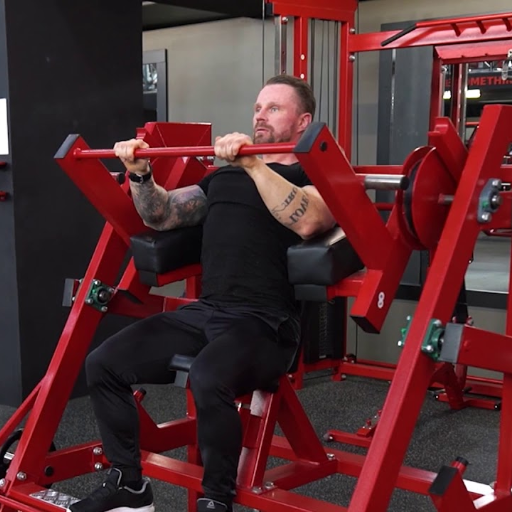
|
Aspect |
Pullover Machine |
Dumbbell Variations |
|---|---|---|
|
Muscle isolation |
Better lat isolation |
Engages stabilizer muscles |
|
Range of motion |
Controlled and consistent |
Greater flexibility, user-dependent |
|
Ease of use |
Beginner-friendly, guided motion |
Requires proper form and balance |
|
Risk of injury |
Lower due to the guided path |
Higher if the form is incorrect |
|
Equipment required |
Specialized machine |
Dumbbell and flat bench |
|
Muscle engagement |
Focuses on lats and chest |
Activates lats, chest, and stabilizers |
|
Adjustability |
Adjustable resistance and seat position |
Limited to dumbbell weight |
|
Portability |
Fixed in gyms |
Portable, suitable for home workouts |
|
Learning curve |
Easy to learn |
Requires practice for proper execution |
|
Versatility |
Limited to pullover motion |
Allows multiple variations and angles |
Dumbbell Pullover vs. Machine Pullover
|
Aspect |
Dumbbell Pullover |
Machine Pullover |
|---|---|---|
|
Muscle isolation |
Engages stabilizers, less isolated |
Better isolation for lats and chest |
|
Range of motion |
User-dependent, flexible |
Controlled and consistent |
|
Ease of use |
Requires proper form and balance |
Beginner-friendly, guided motion |
|
Risk of injury |
Higher if the form is incorrect |
Lower due to the guided path |
|
Equipment required |
Dumbbell and flat bench |
Specialized machine |
|
Muscle engagement |
Activates lats, chest, and stabilizers |
Focuses on the lats and chest |
|
Adjustability |
Limited to dumbbell weight |
Adjustable resistance and seat position |
|
Portability |
Portable, suitable for home workouts |
Fixed in gyms |
|
Learning curve |
Requires practice for proper execution |
Easy to learn |
|
Versatility |
Allows multiple variations and angles |
Limited to pullover motion |
Benefits of Each Variation
Both dumbbell and machine pullovers offer a range of benefits that depend on the user’s goal, preferences, and training environment. Below is an exhaustive comparison of the advantages of each method:
Dumbbell Pullover:
1. Greater Range of Motion (ROM): The dumbbell pullover has a larger range of motion, mainly for the chest and lats. This presented an opportunity for a deeper stretch, which can better activate muscle fibers and increase flexibility.
2. Activation of Stabilizer Muscles: With the freedom of the dumbbell moving about during the exercise, stabilizers are activated, thus boosting overall strength and coordination.
3. Versatility: The dumbbells allow for some variation in angles or use of a flat or incline bench. This makes working the muscles slightly differently while avoiding boredom.
4. Accessibility: This exercise is perfect for the home gym since dumbbells are small and require less space compared to machines.
Machine Pullover:
1. More Targeted Engagement: The Machine pullover isolates the lats and chest a bit better because of its motion control; hence, it is perfect for someone looking to improve lateral strength and size specifically.
2. Injury risk is minimal: Since a good candidate’s machine supports and stabilizes the weight, it will serve as a safer option for beginners, and alternatives have been recommended for rehabilitation from injury.
3. Consistent Resistance Curve: Advanced machine designs often incorporate a resistance curve that is best suited for providing uniform tension throughout the movement for ideal muscle development.
4. Intuitive Use: An advantage of pullover machines is their user-friendly nature; they require less attention to form so that lifters can concentrate solely on muscle engagement.
Supporting Data
Recent studies on fitness suggest that machine pullovers can induce more consistent tension in the lats through both concentric and eccentric actions, thereby promoting hypertrophy to a greater extent. However, free weights, such as dumbbells, have been shown to elicit greater electromyographic (EMG) activation in the stabilizer muscles and serratus anterior, thereby aiding in functional strength development.
According to a 2023 report by the Strength Training Journal, alternating between the two variations in a training program can help improve muscular balance, as the latter focuses on isolation and the former on functional strength. The two pullover types complement each other in terms of building chest and back muscles, while preventing muscular imbalances. Personal goals, training experience, and equipment availability should dictate selection among these exercises.
Choosing the Right Option for Your Workout
There are several factors worth considering when selecting a pullover for your workout. Let us see five considerations to help you make a better choice for your training goals:
- Training Experience
- Level 1. Beginners: Machine Pullovers are generally easier to comprehend and control, making them a good starting point for those new to weight training.
- Level 2. Advanced: Dumbbell pullovers may be better suited for advanced lifters who have developed proper form and stability.
- Targeted Muscle Activation
- The machine pullover isolates the latissimus dorsi and ensures targeted activation of the back muscles.
- Dumbbell pullovers are meant for a less focused type of activation of the front and back muscles, with secondary stabilization through the core and shoulders.
- Availability of Equipment
- When equipment is limited in your gym, a dumbbell pullover can be performed just about anywhere with a flat bench and a dumbbell.
- For machine pullovers, however, specific gym equipment is needed and can limit access depending on your workout location.
- Range of Motion and Stretch
- The dumbbell pullover offers a greater range of motion, allowing the targeted muscles to stretch further and engage more effectively.
- Each one has its controlled movement, but the machine pullover won’t allow as much flexibility and stretch.
- Training Emphasis
- Where hypertrophy and controlled muscle isolation are the objectives, the machine pullover stands forth to the challenge.
- Dumbbell pullovers can better enhance functional strength and muscle coordination.
You can place the pullover variation under the shelf, suited to your personal critical needs. Additionally, never lose sight of the importance of form and technique.
References
-
Washington State University – University Recreation
Online Exercise System
This resource provides detailed information on various exercise machines, including the chest pullover machine. -
USDA Forest Service – Muscular Fitness Exercises
Muscular Fitness Exercises PDF
This document covers muscular strength and endurance exercises, including the use of weight machines like the pullover machine.
Frequently Asked Questions (FAQ)
What are the benefits of using a pullover machine for chest and back workouts?
The pullover machine is designed to target the upper body muscles, specifically the pectorals (pecs) and lats. By utilizing this machine, you can enhance your muscle definition and develop upper-body strength. The benefits of the pullover include improved range of motion, better posture, and the ability to effectively engage multiple muscle groups, including the triceps and serratus. This makes it an excellent addition to any gym routine.
How does the pullover machine compare to dumbbell pullover exercises?
The pullover machine provides a controlled environment for performing the exercise, which can be beneficial for beginners. Unlike the dumbbell pullover, which requires balancing and stabilizing the weights, the machine guides your movement, allowing for a full range of motion. This can help prevent injury and ensure proper form while still activating the same muscles, including the lats and pectorals.
What muscles are used during a pullover on the machine?
When using a pullover machine, the primary muscles activated are the latissimus dorsi and pectoral muscles. Additionally, the triceps and serratus anterior are also engaged during the movement. This combination makes the pullover machine an effective tool for building upper body strength and achieving a defined physique.
How do I adjust the seat on a nautilus pullover machine?
To adjust the seat on a Nautilus pullover machine, first, locate the adjustment lever or pin, usually found near the seat. Pull the lever or remove the pin, then adjust the seat to your desired height. Ensure that your elbows are aligned with the pivot point of the machine when in the starting position to maximize effectiveness and safety.
Can I substitute a flat bench and dumbbells for a pullover machine?
Yes, you can substitute the pullover machine with a flat bench dumbbell pullover. While the machine provides guided support, performing the exercise on a bench with dumbbells allows for more freedom of movement and better engagement of stabilizing muscles. Just ensure that you maintain proper form and control of the weights to avoid injury.
What is the proper form for using a pullover machine?
To use a pullover machine with proper form, start by adjusting the seat height so that your elbows align with the machine’s pivot point. Grip the handles with your palms facing down and maintain a slight bend in your elbows. As you pull the handles towards your chest, keep your shoulder blades retracted and focus on engaging your lats and pecs. Extend your arms behind your head while maintaining control, ensuring you work within a full range of motion.
What is the recommended rep range for pullover exercises on the machine?
The recommended rep range for pullover exercises on the machine typically falls between 8 to 12 reps for muscle hypertrophy. For strength training, consider lowering the reps to 5-8 while increasing the weight. It’s essential to focus on progressive overload to challenge your muscles and promote growth continually.
How can I improve my mobility for pullover exercises?
Improving mobility for pullover exercises can be achieved through regular stretching and mobility drills focused on the shoulders, chest, and back. Incorporating dynamic stretches, such as arm circles and thoracic spine rotations, before workouts can enhance your range of motion. Additionally, practicing the movement with lighter weights helps develop muscle memory and control, which can lead to better performance on the pullover machine.



